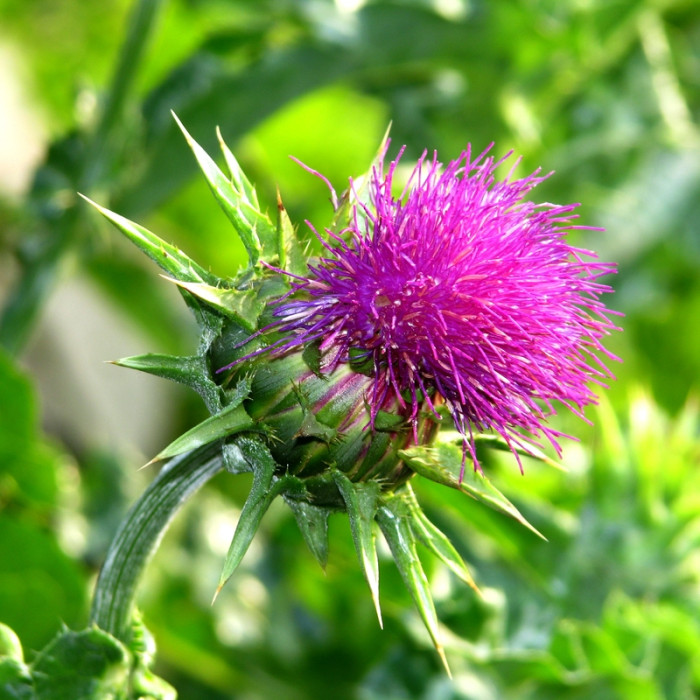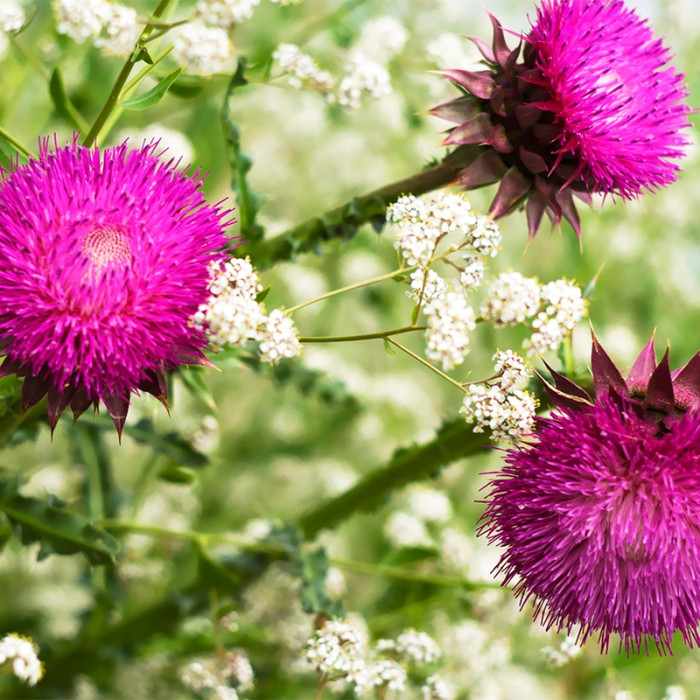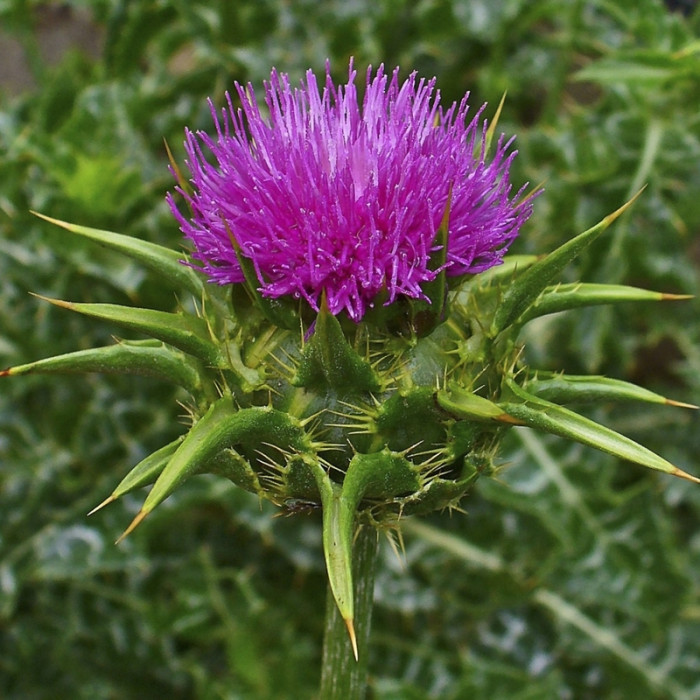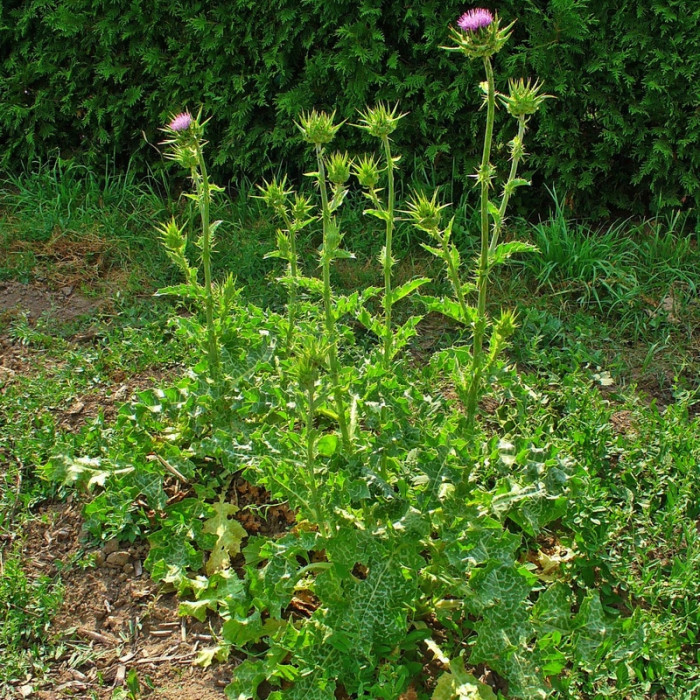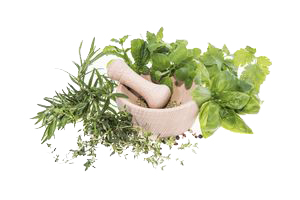Milk Thistle or Spotted Milk Thistle / Silybum marianum
An annual or biennial thorny plant 1-1.5 meters high. Stem simple or branched, glabrous. The leaves are large with yellowish spines along the edge of the leaf and along the veins below; leaf blade green with white spots, shiny. The flowers are purple, collected in large single baskets with a tiled wrapper, consisting of prickly green leaves. The inflorescence bed is fleshy, covered with hairs. All flowers are bisexual, tubular. Blooms in July - August. The fruit is an achene with a tuft.
Cultivated for medicinal raw materials. The main active ingredients are flavonoids and flavonolignans (silybin, silicristin, silydianin). In addition, it contains alkaloids, saponins, fatty oils (up to 25%), proteins, vitamin K, resins, mucus, tyramine, histamine, as well as macro- and microelements.
Good honey plant.
Preparations of milk thistle improve the formation and excretion of bile, the secretory and motor functions of the gastrointestinal tract, increase the protective properties of the liver against infections and various poisonings. Medicinal raw materials are mature achene fruits: Fructus Silybi mariani - milk thistle fruits.
It is used to treat diseases of the liver (hepatitis, cirrhosis, toxic lesions), spleen, gallstones, jaundice, chronic cough and other diseases. It is also used to treat hard-healing leg ulcers, open fractures of the lower extremities, and to treat varicose veins.

No questions about this product, be the first and ask your question.


